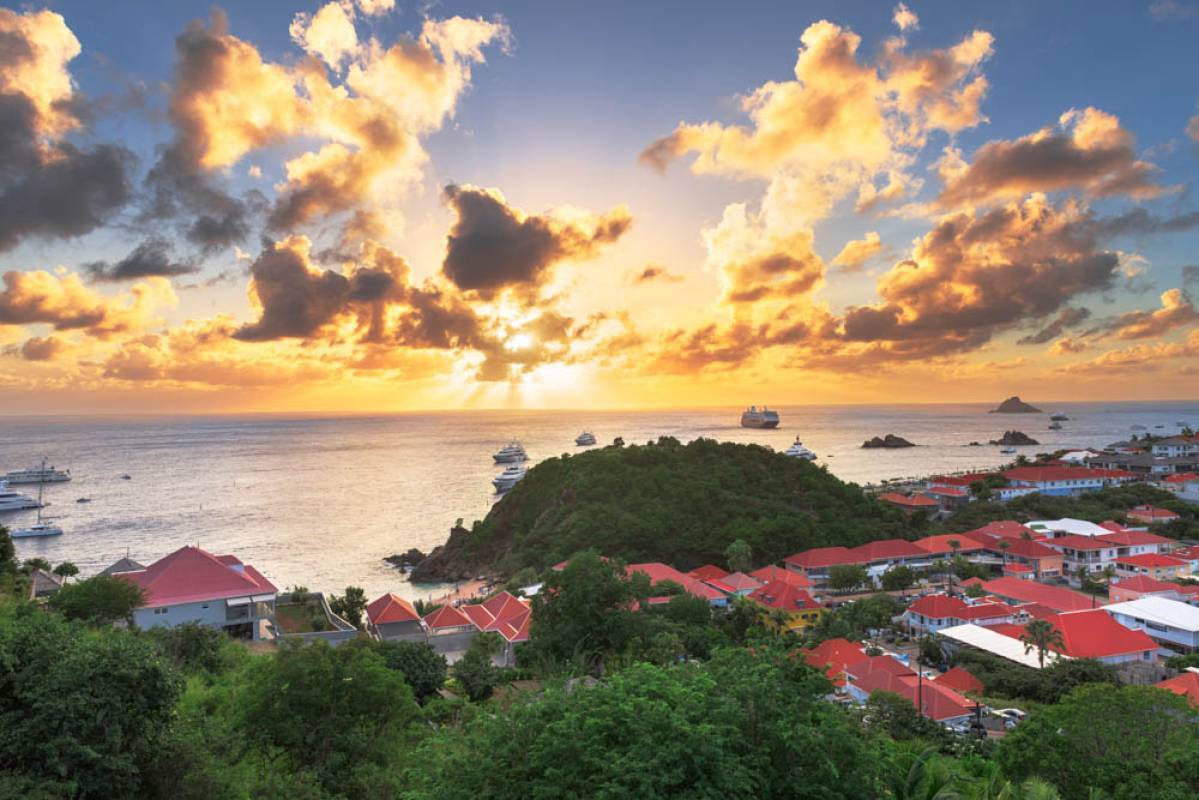


Did you know that Saint Barthélemy was under Swedish rule for almost a century before becoming French again? This small Caribbean paradise island has a history as rich as it is surprising. From the Amerindian peoples to its role as a free port in the 18th century, your luxury real estate agency in Saint Barth BARNES takes you on a journey through the island's history and helps you better understand how it has traversed the ages while preserving traces of its fascinating past.
Long before the arrival of Europeans, Saint Barthélemy was inhabited by the Arawaks, followed by the Caribs, Amerindian peoples who primarily lived off fishing and agriculture.
In 1493, Christopher Columbus spotted the island during his second voyage and named it Saint Barthélemy in honor of his brother Bartolomeo. However, the island, deemed too rocky and unsuitable for sugar cane cultivation, did not immediately attract settlers.
If you want to explore this era, Saint-Jean Bay provides the perfect setting to imagine the arrival of the first European navigators. Its breathtaking panorama will transport you back to the island's maritime past.
It was not until the 17th century that the first French settlers established themselves on the island after purchasing it from the Knights of Malta in 1659. However, the island's infertile land and lack of resources limited its development.
Inhabitants mainly lived off fishing and livestock farming, far from the large sugar plantations that flourished on neighboring islands. Saint Barth remained both a strategic and discreet island, escaping major colonial ambitions.
In 1784, a significant event transformed the island: Louis XVI ceded Saint Barthélemy to King Gustav III of Sweden in exchange for commercial advantages in Gothenburg. Under Swedish administration, the town of Gustavia (named in honor of the king) became a bustling free port, attracting merchants and privateers from around the world.
Even today, Gustavia's architecture retains traces of Swedish influence. Strolling through its streets, observing the old stone houses, and visiting the "Wall House" Territorial Museum allows visitors to relive this lesser-known period.
In 1878, after nearly a century of Swedish governance, France repurchased the island, making it a municipality of Guadeloupe. The economy refocused on fishing and agriculture, leading to a period of relative obscurity.
The real turning point came in the 1950s with the arrival of wealthy tourists drawn by its idyllic climate and pristine beaches. In the 1960s and 70s, celebrities like David Rockefeller and Baron Rothschild invested in local real estate, transforming the island into an ultra-prestigious destination.
In 2007, Saint Barthélemy acquired the status of a French overseas collectivity, distinct from Guadeloupe, reinforcing its autonomy while remaining attached to France.
Today, the island continues to cultivate its exclusivity while preserving its heritage. To better understand this transformation, a visit to the "Wall House" Territorial Museum in Gustavia is a must. This unique venue displays historical artifacts, documents, and photographs retracing Saint Barth’s significant events.
Saint Barthélemy was ceded to Sweden in 1784 before being repurchased by France in 1878. Its return under the French flag was due to Sweden's desire to disengage from unprofitable colonial possessions.
Gustavia is the island's former Swedish capital. Its unique architecture and past as a free port make it a fascinating historical site.
Yes! The "Wall House" Territorial Museum, the Swedish fortifications of Gustavia, and the old colonial residences are must-sees for history enthusiasts.
Saint Barthélemy is much more than a paradise destination. Its fascinating past, marked by French and Swedish influences, gives it a unique identity. Would you like to explore Saint Barth on your next vacation? Invest or settle on this exceptional island? Discover the most beautiful vacation rentals and the finest properties for sale in St Barth with BARNES! Feel free to contact us to discuss your project.
Add your comment